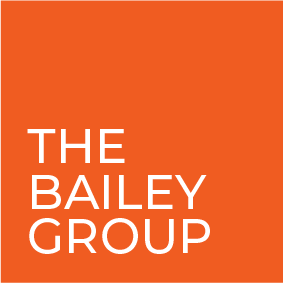
What’s Your Search Strategy?
What’s Your Search Strategy?
As Director of Service Delivery for The Bailey Group, I am responsible for ensuring that we have the best possible coaches and consultants who will exceed our customers’ and clients’ expectations. I am happy to report that our team is incredibly talented. Because we are so invested and committed to actualizing the impact we seek to have in the client organizations we partner with, we measure our client’s satisfaction with our proprietary SAMM (TM) tool. And we have found that across the board, our clients have a 9.7/10 satisfaction score. It is an honor to be a member of this team that is having an enormous impact on organizations.
The need for our services is growing, and so are we. Right now, The Bailey Group is searching for our next Senior Executive Coach and Consultant, and I am responsible for finding this individual. As I set out on this task, I developed a set of search strategies and want to share them with you. I hope they will be helpful to you as you look for amazing new team members.
Create a Job Description that Describes the Present and Leaves Room for the Future
Craft job descriptions that strike a delicate balance between current role requirements and the potential (even likelihood!) for future growth and adaptation. Be certain to outline the immediate responsibilities and qualifications necessary for the position, offering a clear picture of the present job expectations. But don’t stop there.
Go beyond describing the current role by conveying our willingness to embrace change and innovation. This signals an openness to evolve the role in response to shifting business needs, emerging technologies, and market trends. By leaving room for the future, this strategy not only attracts candidates who can fulfill the current demands but also those who possess the flexibility, ambition, and adaptability to grow within the company.
This approach benefits both the organization and candidates. It ensures that candidates who apply are aligned with the company’s long-term vision and values, making them more likely to stay and contribute to its growth. Moreover, it encourages continuous learning and development, fostering a culture of innovation and resilience within the workforce.
Create a Job Posting that is Clear, and Challenge Your Requirements
Write job advertisements that are both transparent and open to flexibility when it comes to candidate qualifications. This approach starts by ensuring that the job posting is crystal clear about the role’s primary responsibilities, company culture, and expectations.
Simultaneously, it challenges the traditional notion of rigid job requirements. Instead of setting overly strict criteria, this strategy encourages employers to identify their core needs and the skills that are truly indispensable for the role. By doing so, it allows for a broader and more diverse candidate pool to apply, including those who may have transferable skills or a strong aptitude for the role but might not meet every traditional requirement. For example, take a critical look at the education requirements for the position. Is that degree really necessary for someone to be successful in that role? By requiring a degree, you will be excluding people who didn’t have the resources to pursue the degree, and this might keep some very talented people from applying for your position!
By carefully considering your requirements, you will promote an inclusive and growth-oriented workplace culture by prioritizing candidates’ potential for learning and development over an exhaustive list of prerequisites.
Use Established Networks, but Do Not Let Your Networks Limit You.
Great people tend to know great people. Some of the best team members we’ve had at The Bailey Group have come through referrals from people we know and trust. We are continuing to use these tried-and-true networks to help find great future team members.
However, the challenge with using established networks is that if the people I know are predominantly from one race or culture, or are of a similar age, or live in my neighborhood, or even are in my LinkedIn network, then chances are I will find more people like me. And that’s NOT what we’re looking for at TBG. We’re looking for people who bring different experiences and expertise to our team. We are looking to add different voices to our corporate choir.
Go beyond your networks. Get to know people who have significantly different perspectives than you.
- Attend networking events, conferences, and seminars focused on diversity and inclusion to build connections with potential candidates.
- Engage with diverse communities and professional organizations to establish your presence. Of course, your organization should be engaged in these activities as part of good business practice anyway.
- Try taking the Intercultural Development Inventory and have it administered by a credentialed professional and find ways to move along your path to understanding diversity and getting to know people who are different than you.
Don’t Look for Culture Fit. Look for Culture Add.
When we find candidates, it can be tempting to assess them based on whether you think they will easily blend in with the people who are on your team now and exclude people who we don’t think share certain qualities with you and your colleagues. Resist this urge.
In the past, “culture fit” often led to homogenous workplaces where employees shared similar backgrounds, experiences, and viewpoints. While this may promote harmony, it can stifle innovation and limit the organization’s ability to adapt to a rapidly changing world.
“Culture add” focuses on the idea that diversity can drive creativity and resilience. It encourages hiring managers to assess how a candidate’s unique qualities can contribute positively to the existing culture. This might involve considering their ability to introduce new ideas, challenge the status quo, and bring a different worldview to the table.
By adopting a “culture add” mindset, organizations can benefit in several ways. They can avoid groupthink, enhance problem-solving, and better connect with a diverse customer base. It also creates a more inclusive environment where employees from all backgrounds feel valued and empowered.
However, it’s important to maintain a balance, ensuring that candidates still align with the organization’s core values and principles. In doing so, you can build a more dynamic, innovative, and adaptable workplace culture that is better equipped to thrive in today’s complex and ever-changing landscape.
Oh, and be careful that once you recruit and hire that person who will add to the culture, don’t then train them in a way that focuses on conforming to the culture. Don’t recruit for diversity, but then onboard for sameness.
Look for Candidates Motivated by Your Organization’s Purpose and Values
What difference does your organization want to make in the world? What values will your organization use to make critical decisions? While there is a lot that can change about an organization, mission, it’s very reason for being and its core values comprise the very foundation. State your organization’s purpose and values boldly and proudly, and seek candidates who are as excited and motivated by them as you are!




